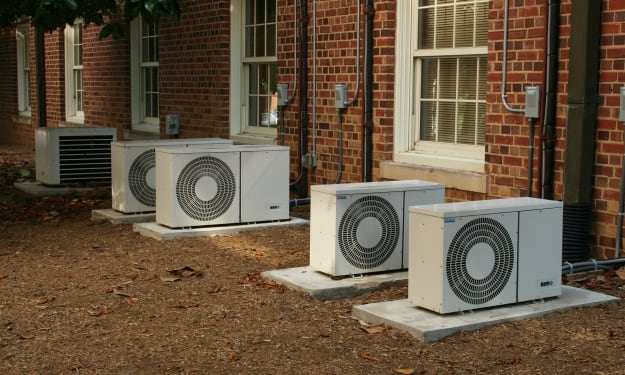Best Ways To Improve Air Quality In Your Home
Know how to follow and improve indoor air quality

Most people do not think much about the subject of CO2. You might hear it in the newscast through coverage of climate change, but it doesn’t usually affect your daily life.
However, more research is starting to point towards the direct effects of CO2 on the human body. From headaches and fatigue to lack of focus and slower thinking, CO2 can affect many aspects of people’s life. Although the recommended amount may vary, generally, your aim should be to keep the carbon dioxide level below 1000 ppm. With some basic understanding and a little preventive maintenance, you may take immediate action today to improve interior air quality.
Why Is Indoor Air Quality Important?
Since you stay in the house most of the time, good IAQ (indoor air quality) is essential. It is not just critical to your well-being, but it also has an effect on your job performance and may sometimes make you feel nauseous.
When it comes to controlling the quality of outdoor air, it is beyond your control. But the quality of indoor air is fully under your control. There are inevitable sources of gases, chemicals, and other contaminants in your body that can result in asthma, allergic reactions, and more.
Here are some of the best ways you can use to improve the air quality in your home.
1. Monitor Your CO2 Levels
The best way to follow your air quality indoors is with a CO2 monitor. Luckily, you do not have to be worried about being unaware of the indoor air quality in your home or office. Since carbon dioxide levels keep on changing, the best way to guarantee that your health is not affected is through a carbon dioxide monitor.
co2maple.com offers CO2 monitors that give accurate and straightforward readings, different color indications shows the carbon dioxide content in the air. Additionally, the CO2 meter has a built-in NDIR sensor which guarantees precise real-time measurements. The small, contemporary desktop monitor similarly has an adaptable design made from wood that provides the operator with a five-color code indication, easy to understand in every age.
If the CO2 level becomes too high and aeration is needed, It's recommended to open windows and create draughts in your home so you let in the more fresh air or think about upgrading your home’s ventilation system.
Low CO2 means the fresh air levels are very high, and you waste energy for cooling or heating. A quick and easy way to ensure you enjoy the best indoor air quality obtainable is to use a CO2 monitor.
2. Increase Ventilation
The perfect way to minimize the CO2 content in the home is via ventilation. Since CO2 levels outside are generally lower, diluting indoor air using out-of-doors air will prevent excess CO2 concentrations from going up. You can achieve this in two methods:
Mechanically
By installing and preserving a good ventilation unit, the CO2 content is reduced. When the system introduces fresh air from the outside, the CO2 is naturally diluted, and the concentration goes down, keeping it within safe amounts.
Manually
An advanced ventilation system is not required to limit the effect of CO2. Easy methods like keeping the windows open allow CO2 to outflow from the space. This is particularly important in cooking activities; any open flame activity uses up oxygen and emits carbon dioxide. Using wood or gas stoves will significantly increase the CO2 level in your house, potentially endangering your health and that of your family.

Opening the windows or even leaving the bedroom door wide open while sleeping will help you sleep healthier. While you sleep, you breathe out carbon dioxide. Keeping the door open increases the level of fresh air that reduces the CO2 gas. This lowers the room’s CO2 level, and studies show that the air stays cooler, so you sleep more peacefully and function better the following day.
3. Limit Open Flames
It may seem like an odd suggestion at first; however, open fire in the household is more regular than you might think. As mentioned above, you already have a CO2 source in your household if your stove runs on wood or gas. If you like to light candles in the evening or sit by the fireside, you might be receiving higher CO2 doses than you think. Likewise, if you smoke cigarettes or other stuff, it involves fire. In addition to other hazardous chemicals, cigarettes release huge levels of CO2, which can get stuck in your office.
All fire is a burning reaction; as it blazes, the fire makes use of oxygen in its reaction. It does not just consume some oxygen in your space; it also replaces it with the CO2 produced. Limit the amount of heat burned in your place to evade the risks of CO2 build-up. Methods to do this may include: requesting friends to smoke from outside, utilizing an outdoor fireplace, and minimizing the number of candles you light. For the essentials, such as using a stove, ensure the hood is operating and open the kitchen window to let out the excess carbon dioxide.
4. Check the Humidity
Relative humidity in your household must be adequate to prevent nosebleeds and coughs but low to avoid humidity problems such as mold growth. In general, indoor humidity between 40% and 60% is recommended. However, this does not take into consideration the change in temperature between winter and summer. In colder climates, humidity should be 30% to 40% in winter to prevent condensation on your windows and some other surfaces. In case you do not have a dehumidifier/humidifier connected to your furnace, you should purchase a humidifier for the winter and a dehumidifier for the summer.
5. Replace the Air Filters
Professionals recommend replacing the air filters in the central air conditioning, heat pump, and furnace monthly. The air filter’s job is not just to keep your air clean of contaminants but also to keep debris and dust away from the HVAC system and ducts. Polluted air ducts may also be a rearing ground for mildew and microorganisms in the air. Changing filters is much cheaper than paying for duct cleaning.
6. Check Your Furnace Every Year
You always visit your dentist for routine cleaning, see your physician for checkups, and change the oil in your car regularly. It’s all referred to as preventive maintenance. The HVAC system also needs regular maintenance. It is the specialist’s job to ensure that the system is working efficiently and that it burns gas at 100% efficacy so that CO does not enter the household or office. Plus, an uncontaminated heating unit will save some money for you due to less fuel usage and extend your furnace’s life. Schedule minimum annual system preservation with your HVAC contractor.
Conclusion
Carbon dioxide is a major pollutant for indoor air. To improve the quality of air in the interiors, you can use different techniques. This could be using CO2 meter and monitor, increasing ventilation, changing air filters, limiting open flames, and much more.





Comments
There are no comments for this story
Be the first to respond and start the conversation.